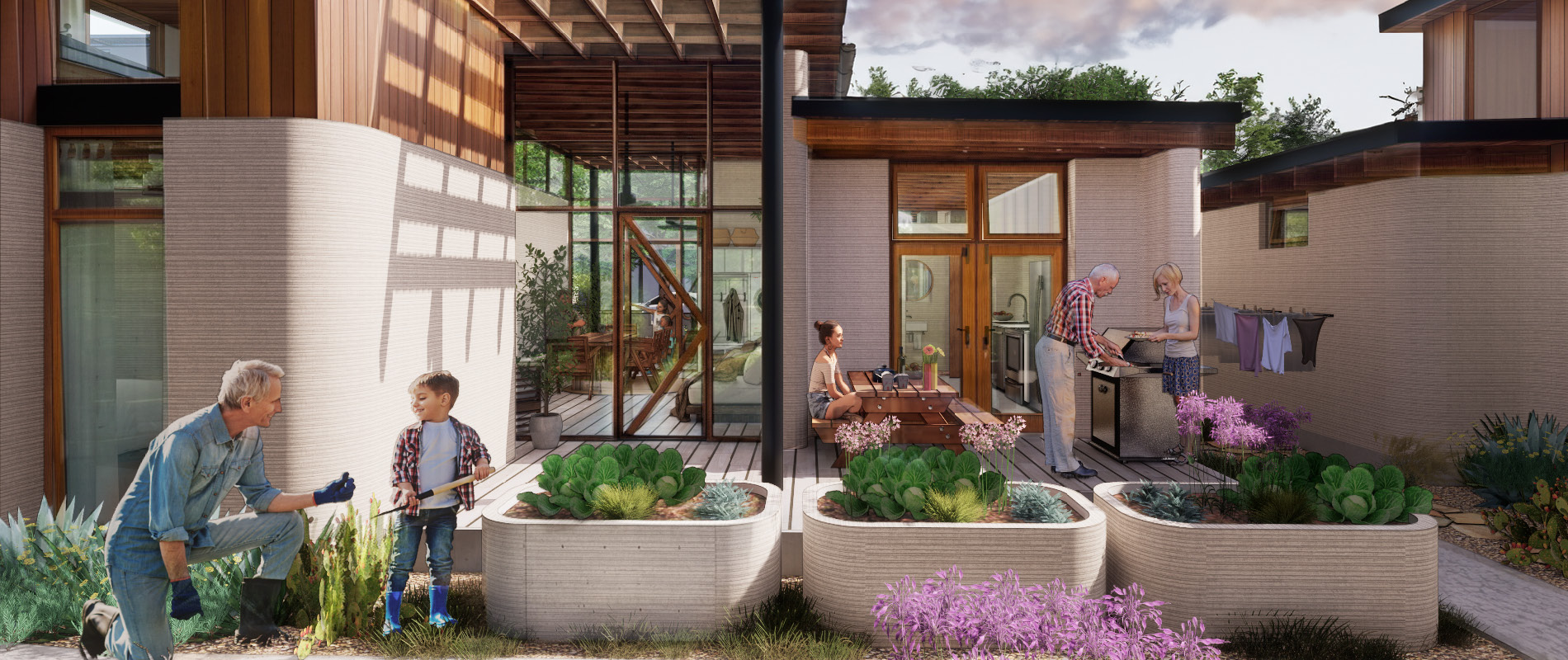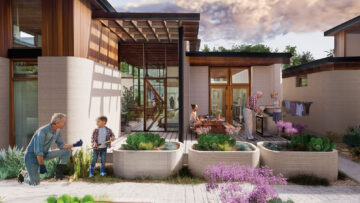Encouraging social interaction through design can have a positive effect on residents

In the pursuit of making healthier communities, designers often focus on efficient building systems, reduced carbon emissions, and on-site energy generation. But we would be missing the point if we didn’t put a comparable emphasis on the health and social wellness of residents. As illuminated by The U.S. Surgeon General’s Advisory on the Healing Effects of Social Connection and Community, Americans today face an epidemic of loneliness and isolation. The study finds that the decline of social connection and its impact on individual health and well-being has reached the level of a public health crisis. Social isolation leads to an increased risk of heart disease, stroke, dementia, and premature death. Loneliness and isolation, unsurprisingly, also have a significant negative effect on mental health, increasing instances of depression and anxiety.
As designers of the homes and communities where people spend most of their time, it is essential that we understand the importance of social connection when considering how spaces encourage community building.
Social Connection in Demographic-Specific Housing
Shrinking social networks and decreased social participation have taken a particularly dire toll on college students and older adults. Traditionally, housing designed for these specific groups has mimicked design for the general population, but on a somewhat smaller scale. With apartment-style student housing, young people can eat, sleep, and study without ever leaving their unit. The large scale of many student housing developments can feel overwhelming, impeding students’ efforts to form meaningful social connections. KTGY’s design concept, Thrive Hall, takes a wellness-focused approach to student housing, orienting smaller groups of units around a shared lounge area, serving approximately 30 students per pod. By reducing the size of individual units and bedrooms and reallocating space to common areas, students are encouraged to venture out of their rooms and build connections with other students. Likewise, careful consideration for the scale, location, and programming of amenities in senior housing communities can encourage increased social connection between residents, supporting both physical and mental health.
Social Connection in Multifamily Housing
These same fundamental concepts can also be applied to multifamily housing design. Unlike a typical single-family neighborhood where neighbors may cross paths while walking a pet or maintaining their yard, multifamily housing often lacks the means for spontaneous interactions. With units typically accessed from a long, anonymous interior corridor, the likelihood of building significant connections while walking within the community is slim. Proposing a solution for multifamily design to counter this challenge, the Block Party design concept redistributes a single, large community amenity into smaller amenity lounges located within each group of six family-oriented units. With controlled access to the block of six units, children can roam freely, providing parents with peace of mind. As in Thrive Hall, the small lounge within each block includes a seating area and tables for community dining, encouraging families to connect with one another.
Looking ahead to the future needs of residents, we can design places that help bring people together, build social bonds, and support community connectedness. By addressing the very present need for social connection, we begin to build resilient and healthy communities and work toward a more connected future. Residential architecture may not be able to solve all of America’s isolation issues, but as designers, we have the tools to respond to this challenge and contribute positive and achievable solutions.
 Careful consideration for the scale, location, and programming of amenities in senior housing communities can encourage increased social connection between residents, supporting both physical and mental health.
Careful consideration for the scale, location, and programming of amenities in senior housing communities can encourage increased social connection between residents, supporting both physical and mental health.
